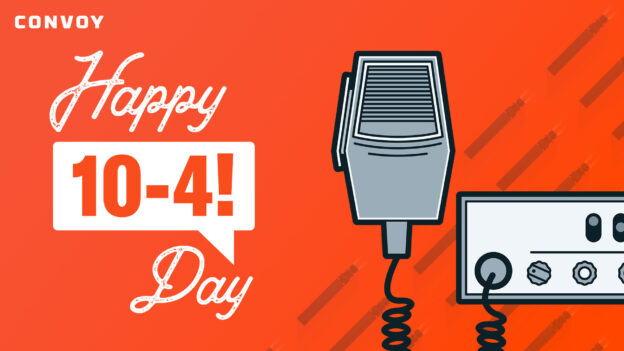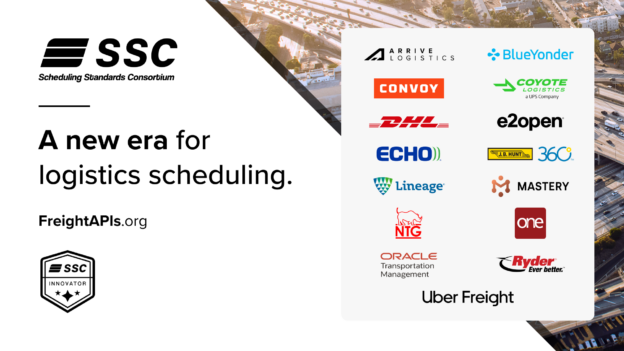An Owner-Operator’s Experience of the COVID-19 Crisis
Carriers, Industry Insights, Shippers • Published on April 14, 2020
Just a few weeks ago, the freight industry saw surging transactional demand as consumers flooded grocery stores for food and household supplies. Now the demand has dried up, and as FreightWaves reports, outbound tender volume is below its average for “normal times.” What do these market trends mean for truck drivers who are on the front lines of the pandemic?
In the latest of our COVID-19 video series, we’re joined by Josh Rickards, a 15-year trucking veteran and owner-operator of Rickards Transportation Services. After the recent plunge in demand, Josh and his team of drivers are struggling to find loads. He says, “We’re at a point where finding a load is like pulling teeth. What I love most about driving is being affected: I’m unable to drive.”
In our interview with Josh, we cover:
- The recent peaks and valleys of freight market demand
- Unpredictable driver experiences at distribution centers and facilities across the country
- How driver feedback can help shippers improve the carrier experience in their facilities
Webinar Invitation: Join Convoy for a panel discussion on COVID-19 and the freight industry, hosted by Logistics Management. The free webinar airs on April 16th, and is available on demand to all registrants. RSVP today.
Subscribe to Freight Economics Updates to get the latest developments delivered directly to your inbox.

You can read the a transcript of the conversation below:
Ari Bixhorn (Convoy): Josh, you’ve been driving now for just about 15 years. I wanted to start off just by getting a sense of what you love most about driving and how that’s been affected by the COVID-19 crisis.
Josh Rickards (Rickards Transportation Services): Well, what I love most is completely being affected by the crisis. At first, when the crisis started to hit the United States, when it hit the West coast primarily, we saw a huge spike in volumes, a lot of panic buying as things started shutting down in the West coast, the West coast was heading towards a lockdown and it was apparent that it was going to start reaching other parts of the country. And so we started seeing a lot of panic buying in California, Oregon, and Washington. So I saw a lot of loads going out to Oregon, a lot of loads going out to California.
Josh Rickards: I thought in my head I’m like, well, a huge demand for us now means no demand for us later. And as the shutdown started to increase and go around the country, now we’re at a point where finding a load is pulling teeth. So what I love most about driving is being affected. I’m unable to drive. There’s just virtually no loads. So that’s what’s being affected the most. I really want to hit the road right now, I really do.
Ari Bixhorn: One of the things I’ve also been hearing a lot about is how things have been changing in facilities. So what have you seen there? I mean, it’s interesting because on one hand, I feel like over the last month or so, Americans have realized just what a critical role drivers play, not only in the economy, but in all of our wellbeing. And at the same time, as I understand it, some of what you’re seeing in facilities is making it harder for you and other folks out there. So tell us a little bit about what you’ve been seeing in facilities and maybe if there were any surprises that you’ve had. What sort of surprises have you seen?
Josh Rickards: Definitely a lot of surprises, especially when you go to distribution centers, food distribution centers. I went to a facility out in Michigan where they were checking temperatures. This was a food distribution center. So they have a lot of inbound freight, more than normal, because of everything going on and they’re checking temperatures. So when I got off the interstate, that’s where the line started from getting off the interstate. And the facility was about two miles up the road. Two hours just to slowly get into the facility because they wanted to check temperatures.
They wanted to limit any human contact. I understand why. But it does make things more difficult in productivity. You’re pulling for a facility and you’re waiting longer because of this process.
Ari Bixhorn: Josh, for our audience members who are manufacturers and shippers watching this video, any thoughts on what you would like them to know from the driver’s perspective?
Josh Rickards: I think right now, I’d say to shippers and manufacturers who are watching is, there’s a lot of difficulties that drivers and carriers are dealing with as well. I think the main thing is consistency. We’re always thinking about the best way for there to be more productivity and things to be efficient, right? And I know Convoy uses this model where you leave reviews. And when I leave a review on a shipper/receiver, I’m focused more on the productivity aspect of things, right? I understand that sometimes you go to a facility and you might be there four hours one day, another day you might go there, it could be two hours. And I understand that they have their own concerns and their own issues that they’re dealing with as well as we are, right? So it’s a lot to ask for shippers and manufacturers, but I think my big word is consistency.
Ari Bixhorn: As you mentioned, I think that consistency starts out with the shippers having visibility into what the drivers are experiencing. So the more feedback, the more ratings you provide, the greater visibility they’ll have into the different facilities and where they need to make improvements or adjustments based on that.
Josh Rickards: And that’s something that, when with Convoy, when I’m using the tool, that’s what I’m looking at, pointing out. I’m pointing out the fact that well, hey, we have this here, well we don’t have this there. So…
Ari Bixhorn: Yeah. Well, Josh, I wanted to thank you for your time today. I know that I speak for everyone here at Convoy when I say that I’ve got a ton of respect for what you do. I was at the grocery store this weekend and I was, again, reminded that I wouldn’t be able to provide for my own family if it weren’t for the work that you and every driver out there is doing every day and I’m incredibly grateful for that. So I wanted to thank you again and I hope you stay safe and stay well out there.
Josh Rickards: Yes sir. And thanks for having me on the show.



